Prepare for Drought With Regenerative Ag Mindset
Drought is a natural and regular event in grazing lands. A drought is a period of time when an area or region experiences below-normal precipitation.
The lack of adequate precipitation can cause reduced soil moisture or groundwater, diminished stream flow, crop damage, and a general water shortage. For livestock producers and managers of grazing lands, this means lower forage production and potential livestock water shortages.
In terms of climate, all regions of the United States experience alternating periods of dry and wet weather.
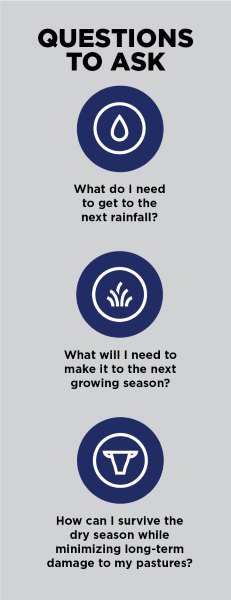
Drought Resilience with Regenerative Ranching
In observing producers implementing regenerative agricultural practices, we find a unique mindset toward drought. We find producers who routinely manage operations proactively, meaning they operate in relation with the weather conditions. They manage anticipating drought long before it occurs. These producers usually have contingency plans in place to nimbly deviate from their “ideal” management plan and adapt to unfavorable weather patterns.
As a bonus, producers practicing regenerative agriculture and grazing typically manage through droughts more easily with fewer adverse impacts on their land and profitability. Their grazing lands also recover more rapidly than other lands, where regenerative grazing is not routinely practiced.
Regenerative ranchers Deborah Clark and Emry Birdwell of Henrietta, Texas, often say the drought of 2011 was the best thing that ever happened to them. It forced them to combine into one herd, maximizing herd impact, and it forced them to improve the way they watered cattle.
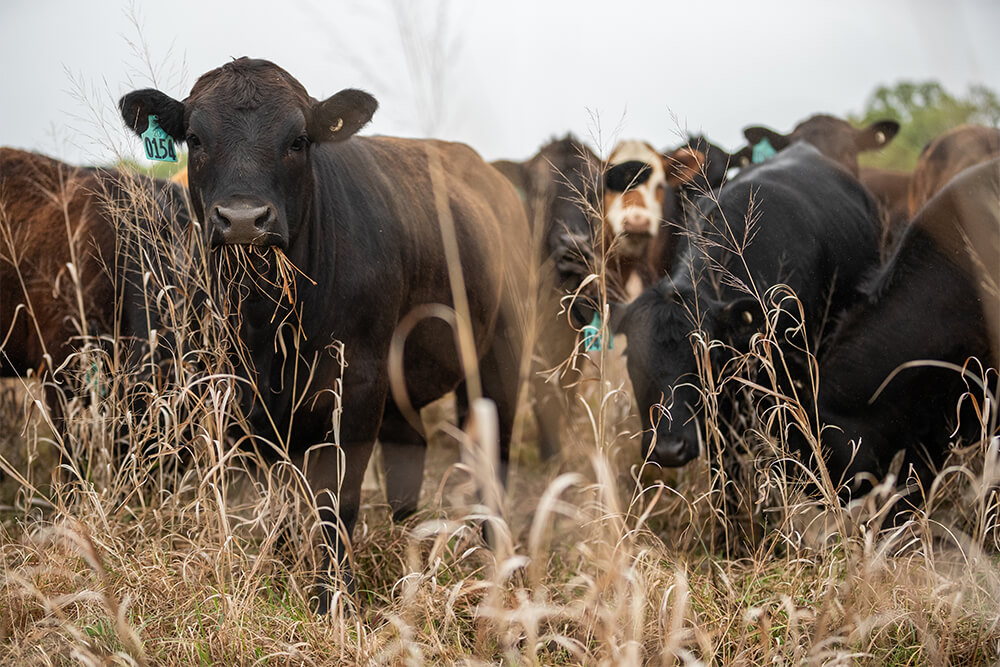
How intense is the drought?
The National Drought Mitigation Center at the University of Nebraska-Lincoln, in partnership with the United States Department of Agriculture, and the National Oceanic and Atmospheric Administration, maintains a drought monitor. A new version is released each Thursday.

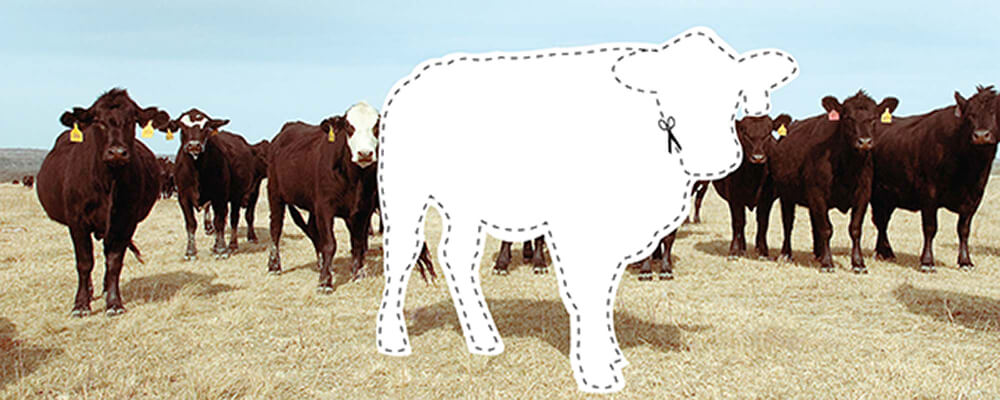
Cull if You Must
Sometimes during a dry spell, a farmer or rancher will need to shrink the cow herd. When culling females, we recommend going in this order:
- Cows with poor disposition.
- Open females.
- Structurally unsound cows.
- Older animals.
- Replacement heifers.
- Phenotypically inferior animals.
- Three- to nine-year-old cows.
For more advice on reducing your numbers, read Guidelines for Culling Cows
Build Organic Matter
The successful long-term application of regenerative agriculture and regenerative grazing results in improvements in the soil and plant communities that make the soils more resilient and drought tolerant.
Managing soils regeneratively results in the building of organic matter above, at and below the soil surface. Regenerative grazing complements the soil health principles but only because the grazing is managed in a way that matches stock numbers to forage biomass, manages for short grazing periods, uses moderate grazing during the active growing season, leaves adequate plant cover after each grazing event, and follows each grazing event with adequate planned recovery. Over time, soil organic matter, soil health and water holding capacity improves. Pastures become more productive, vigorous, and more resilient during drought (and floods).
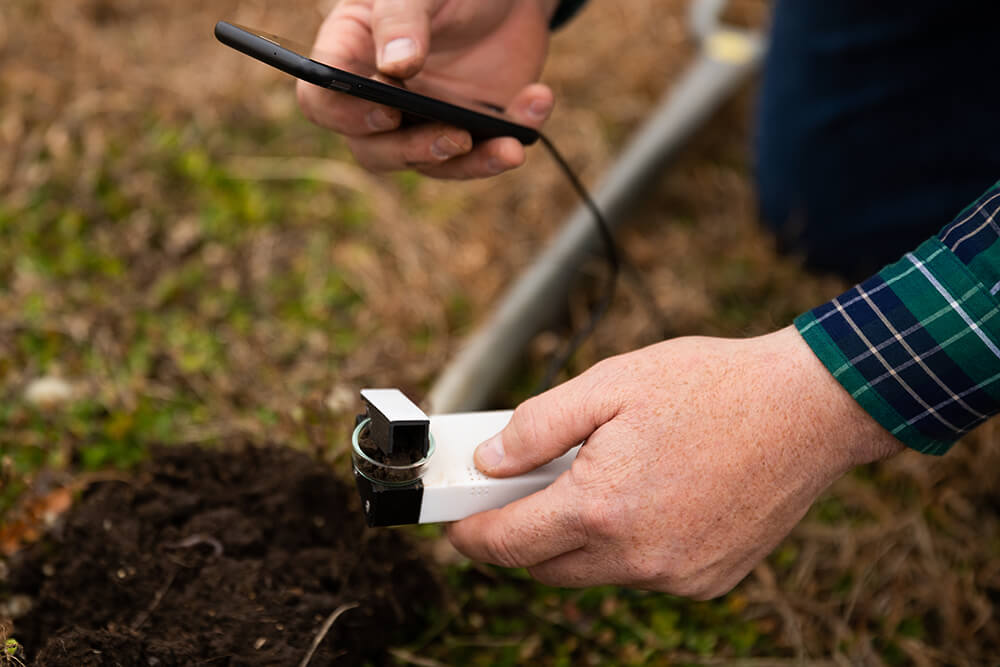
Manage Pastures With Livestock, Not For Livestock
Regenerative graziers actually manage their pastures and forage inventories with livestock instead of their pastures for livestock — pasture and grazing management are the priorities. There is a distinction here that indicates a different, forward-thinking mindset.
The distinct advantage regenerative grazing producers have over other livestock producers is they are prepared to adjust stocking rates with forage availability and growing conditions. At the onset of drought, they begin adjusting their management plan and stock numbers based on preset criteria and triggers outlined in a drought contingency plan. They actively monitor both moisture conditions and forage production, and then they adjust stock numbers to reflect actual conditions. Regenerative producers are both mentally and logistically prepared to make sound, proactive management decisions for the short- and long-term benefit of the land resource and ranching operation when droughts occur.
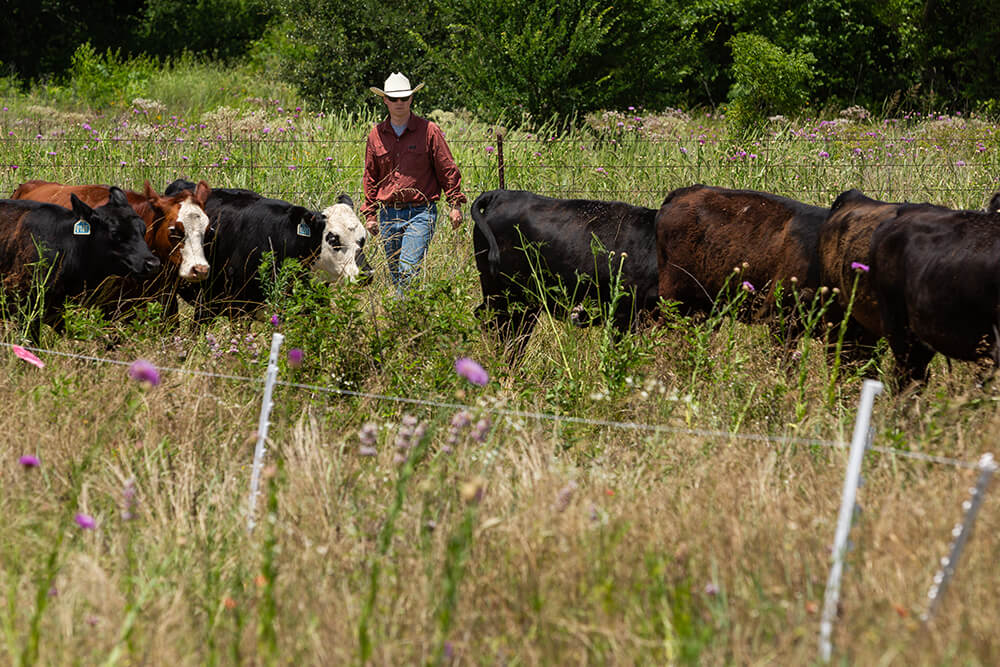
Have a Plan
As stated earlier, meteorologists have begun providing evidence that the favorable precipitation patterns are now changing, shifting to what is expected to be a drier period. Producers practicing regenerative grazing for many years are monitoring their forage production now and know the capabilities of their pastures to withstand short- or long-term dry spells. They are prepared to implement drought plans to protect the land resource when severe drought sets in. They have managed their pastures and stocking rate proactively and are accustomed to balancing livestock demand to forage production. As a result, their grazing lands are more resilient with improved soil health and soil organic matter, increased water holding capacity, and enhanced forage production capabilities. Rainfall that occurs during a drought is more effective.
Drought preparation should include an appropriate contingency plan that involves strategies and activities that can be executed in an orderly fashion as adverse conditions persist.
You should prepare inventories of cattle by class, stored forages and standing forage to be grazed as well as assessments of livestock water quantity and quality. It is also important to determine the period in which the herd could be maintained as is if drought conditions continue as well as the length of time the herd could be retained as the stocking rate is incrementally reduced.
Once drought breaks and favorable precipitation patterns return, these grazing lands that have been managed according to the soil health principles and regenerative grazing will respond much more readily to rainfall events with little or no evidence of adverse effects from the drought. The mindset of a producer practicing regenerative grazing is certainly better prepared for drought.
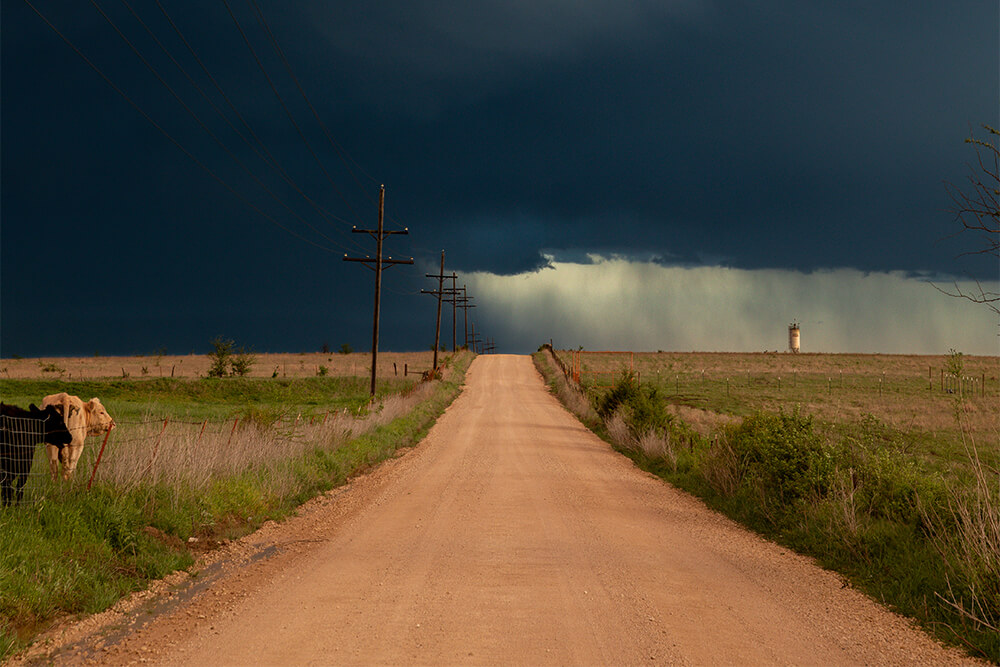
What Is Regenerative Ag?
Regenerative agriculture is the process of restoring degraded soils using practices based on ecological principles. Regenerative agriculture promotes:
Building soil organic matter and biodiversity
Healthier and more productive soil that is drought- and flood-resilient
Decreased use of chemical inputs and subsequent pollution
Cleaner air and water
Enhanced wildlife habitat
Capturing carbon in the soil to combat climate change
The above listed outcomes result from strategically applying management practices based upon the six principles of soil health, which are:
- Know your context
- Cover the Soil
- Minimize Soil Disturbance
- Increase Diversity
- Maintain Continuous Living Plants/Roots
- Integrate Livestock
What Is Regenerative Ranching?
As one can deduce, regenerative ranching complements the soil health principles. It is the essence of the principle, “integrate livestock properly.”
On grazing lands, regenerative grazing means:
- Grazing for short periods.
- Grazing moderately in the growing season.
- Leaving adequate plant cover followed by adequate, planned recovery that is facilitated by effective multipaddock grazing management protocols.
- Adjusting stock numbers to match forage biomass.
In other words, the grazing is planned, managed and in sync with the growing conditions at any given period of time.
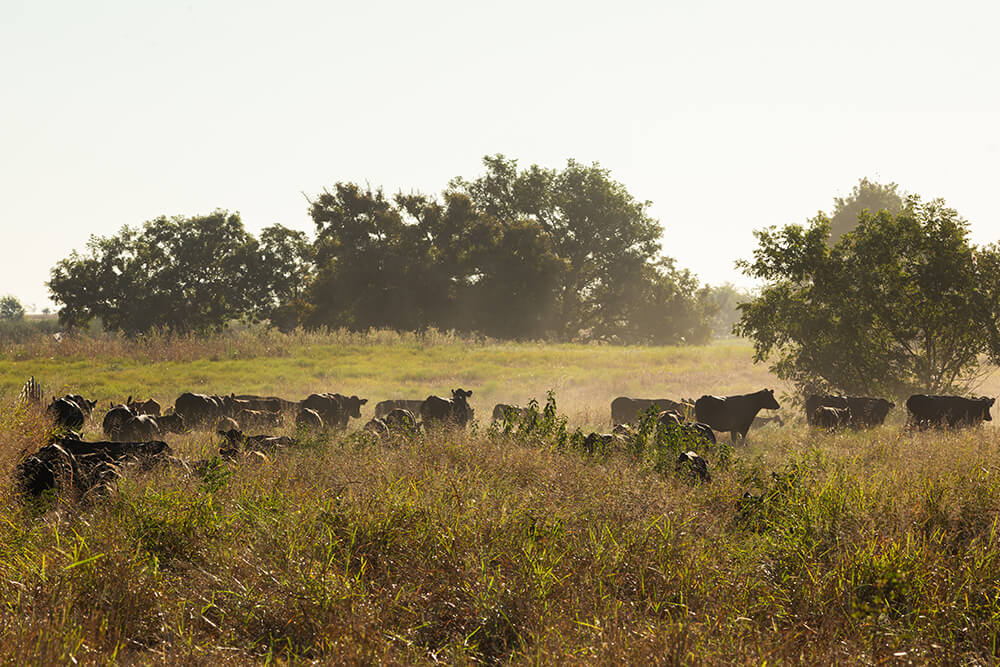
Something to fall back on
Even with the best laid plans, a little insurance — drought insurance — can offer an additional layer of protection.
The USDA Risk Management Agency’s Pasture, Rangeland, Forage insurance program is designed to provide coverage on your pasture, rangelands and grazed forage crops. It gives producers the ability to cover replacement feed costs when a loss of forage for grazing or harvest is experienced because of lack of precipitation, not just during extreme drought.
Ranchers can sign up annually, in the fall.
While the program offers another tool in the cattle raiser’s toolbox, keep in mind the best insurance is good long-term pasture management before and during the drought.
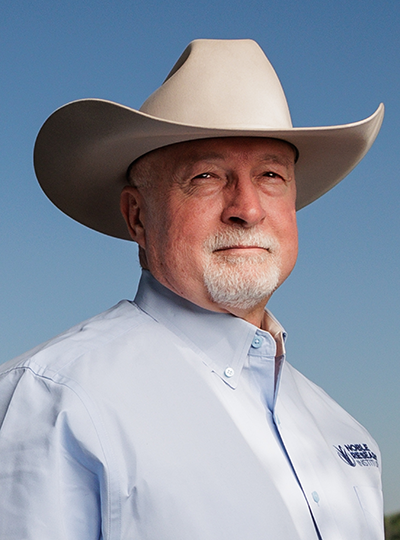
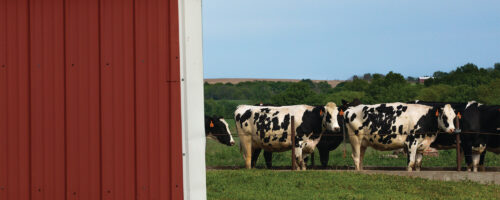
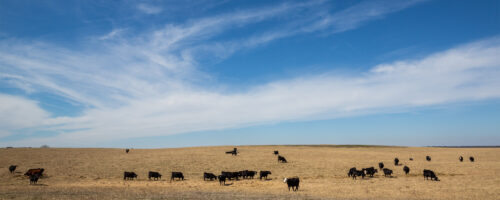
Comment